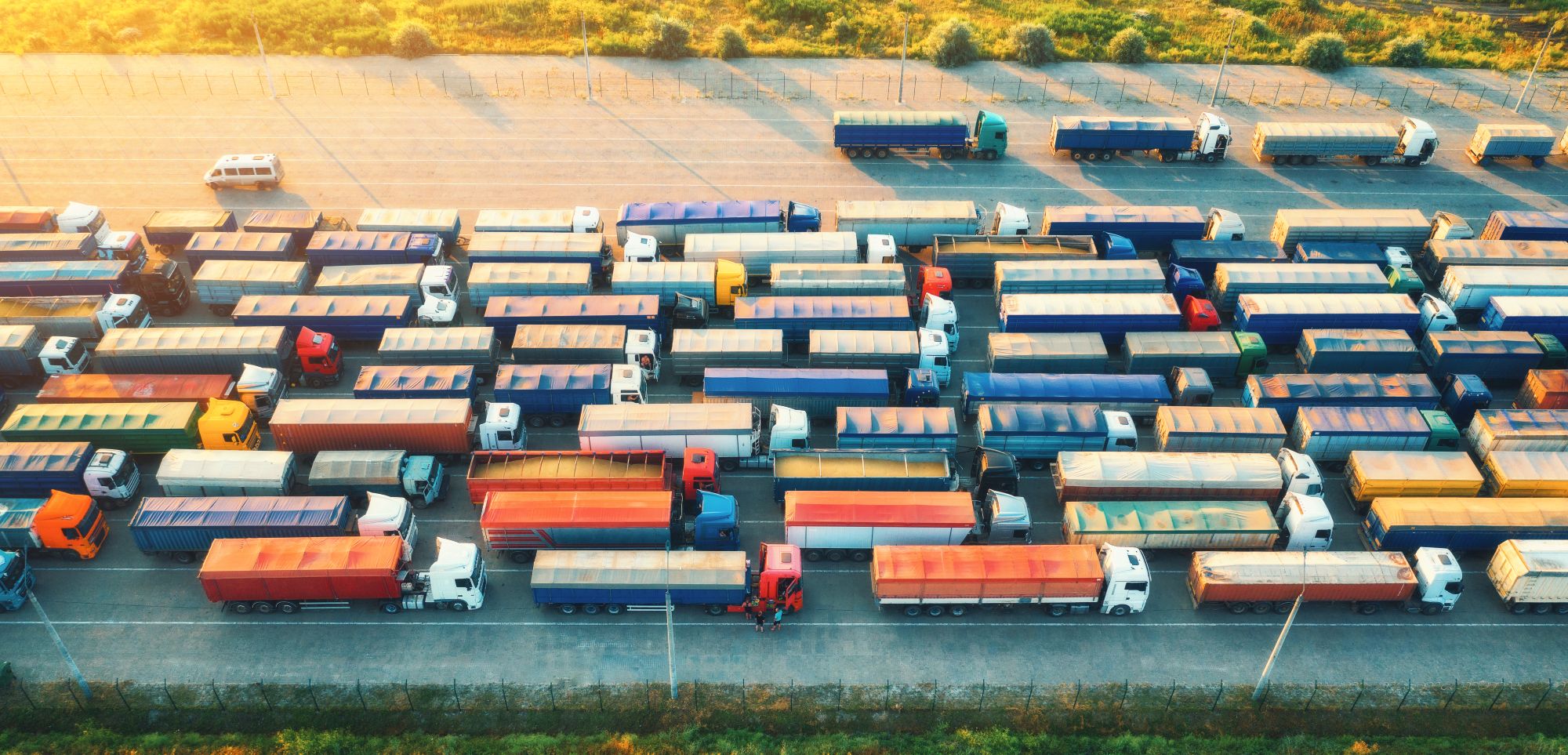
Guest
6 стратегій управління автопарком, які змінять ваш прибуток
Створено: 16.10.2025
•
Оновлено: 16.10.2025
Менеджери автопарків у Великій Британії стикаються з фінансовими проблемами на багатьох фронтах. Зростання операційних витрат через нестабільні ціни на пальне, посилення тиску на трансформацію сталого розвитку, капіталомісткі закупівлі транспортних засобів, хронічний дефіцит кадрів, а також незаплановані та тривалі простої негативно впливають на фінансовий результат.
Якщо ви вже інвестували в базові рішення для оптимізації маршрутів, підвищення ефективності роботи водіїв, мінімізації споживання пального, моніторингу стану активів і планування профілактичного обслуговування, але не побачили значних результатів, розгляньте можливість впровадження цих шести практичних стратегій для стабільного отримання позитивного чистого прибутку.
1. створення детального плану життєвого циклу автопарку
Багато фахівців з автопарків розглядають активи як неминучі грошові ями і змирилися з їхньою тенденцією до виснаження ресурсів. Таке уявлення нормалізує неефективне споживання пального, необґрунтовано високі витрати на технічне обслуговування та часті простої через раптові поломки. Непридатні до експлуатації транспортні засоби ставлять під загрозу безпеку водія та вантажу, що призводить до вищих страхових тарифів у майбутньому та довготривалої репутаційної шкоди.
Розробка структурованого життєвого циклу автопарку та стратегії заміни має важливе значення для виведення певних транспортних засобів з експлуатації до того, як вони почнуть завдавати шкоди казні компанії. Це допоможе вам розумно розпоряджатися бюджетом, дозволяючи приймати обґрунтовані рішення, виходячи з довгострокових цілей, а не нагальних потреб.
Визначте пріоритети щодо вартості пробігу, віку та пробігу транспортного засобу. Ці життєво важливі показники вказують на те, коли актив стає хорошим кандидатом на виведення з експлуатації, а не чекати, поки він стане непридатним для експлуатації. Такий проактивний підхід знижує загальну вартість володіння, дозволяючи вам перепродати застарілі активи, поки їхня вартість ще відносно висока. Виручка від продажу може компенсувати витрати на придбання та інтеграцію транспортних засобів з частковою автоматизацією у ваш автопарк.
2: Посилити роботу з підбору персоналу
Хронічний дефіцит робочої сили в логістичній галузі призводить до збільшення витрат на управління автопарком через зростання заробітної плати, збільшення часу ремонту транспортних засобів та збитків, що виникають через затримки та пропущені терміни. Ця проблема існувала ще до пандемії, а Brexit лише посилила її. У 2023 році, за оцінками UK in a Changing Europe та Центру європейських реформ, після скасування свободи пересування у Великій Британії було зафіксовано [дефіцит у 330 000 працівників] (https://www.theguardian.com/politics/2023/jan/17/shortfall-of-330000-workers-in-uk-due-to-brexit-say-thinktanks).
Ключовим моментом є підвищення обізнаності про логістику як про захоплюючу кар'єру на низовому рівні. Керівники автопарків могли б зробити більше для ознайомлення учнів початкової та середньої школи з цією галуззю. Пояснення того, чим займаються водії та механіки вантажівок і який внесок вони роблять у суспільство, може підвищити престиж цих професій. Програми стажування можуть творити чудеса, оскільки опитування Logistics UK 2022/2023 року показало, що 68% людей, які цікавляться логістикою, шукають саме їх.
Зменшення вузьких місць на об'єкті
Поганий дизайн робочих місць є недооціненою дилемою в управлінні автопарком. Уповільнення процесу виконання замовлень може викликати ефект доміно, який в кінцевому підсумку збільшує операційні витрати. Це може призвести до збільшення часу простою, недовикористання талантів, недотримання графіків поставок і незадоволення клієнтів. Неефективність робочого процесу може змусити вас перерозподіляти ресурси, переставляти водіїв і транспортні засоби та змінювати маршрути, щоб компенсувати затримки.
Дезорганізація, пов'язана з приміщенням, не входить до компетенції менеджерів автопарку. Тісна співпраця зі складським менеджментом має значення для збільшення логічного потоку і швидкості переміщення товарів у просторі. Прості вдосконалення, такі як підвішування достатньо високих світлодіодних світильників та встановлення дверей [які відчиняються зі швидкістю 61 сантиметр на секунду] (https://www.cornelliron.com/rolling-door-blog/Cornell-blog/how-high-speed-doors-increase-warehouse-productivity), можуть зменшити кількість помилок та підвищити продуктивність.
Використовуйте технології для забезпечення чіткої комунікації. Впровадження програмного рішення, яке об'єднує або допомагає взаємодіяти системам управління складом і автопарком, дає всім зацікавленим сторонам повну видимість операцій кожного відділу. Формування міжфункціональної команди розвиває культуру співпраці та спільної відповідальності, покладаючи на всіх колективну відповідальність за помилки та запобігаючи перекладанню відповідальності на інших.

Модернізація ремонтних процесів
Інноваційний, прагматичний підхід до обслуговування транспортних засобів необхідний для зменшення незапланованих простоїв. Проактивні налаштування та автоматичне планування технічного обслуговування є [життєво важливими для продовження терміну служби активів] (https://renovated.com/construction-fleet-management-software/), але оцифрування перевірок та оптимізація ремонтів є не менш важливими для раннього виявлення несправностей, швидкого відновлення придатності до експлуатації та ефективної роботи технічного персоналу.
Мобільні передрейсові перевірки відіграють важливу роль у профілактичному обслуговуванні активів та дотриманні нормативних вимог. Додатки збирають дані в режимі реального часу, дають можливість водіям повідомляти про проблеми керівництву та полегшують ведення обліку для аналізу, аналізу та звітності. Цифрові робочі замовлення допомагають відстежувати ремонтні роботи у всьому автопарку і гарантують, що жоден з них не вплине на графік доставки.
Модернізоване обладнання полегшує життя вашим технічним спеціалістам і доповнює ініціативи, що дозволяють використовувати їхні сильні сторони при виконанні завдань. Новітні діагностичні інструменти можуть бути значними витратами, але також суттєво заощаджують час. Вони окупаються за рахунок зменшення передчасного зносу компонентів, запобігання поломкам і допомоги в переговорах щодо зниження страхових тарифів. Кожна нова технологія має криву навчання, тому цінуйте належне навчання для підвищення кваліфікації вашого персоналу.
5) Створіть мережу сторонніх механіків
Навіть добре доглянуті автомобілі автопарку можуть зламатися в дорозі через стан доріг у Великій Британії. Згідно зі звітом за січень 2024 року, який містить дані, зібрані 7000 користувачами додатку Stan, [на британських проїжджих частинах налічувалося 1,5 мільйона вибоїн] (https://www.highwaysmagazine.co.uk/App-data-suggests-11.5-million-potholes-in-UK/13988). Ця цифра охоплює лише 13% дорожньої мережі країни, що свідчить про те, що реальна кількість дефектів може сягати 11,5 мільйонів.
У регіонах з холодною та вологою погодою частіше виникають вибоїни на дорожньому покритті. Місцеві органи влади щорічно засипають мільйони вибоїн, тому планувати маршрути заздалегідь, щоб уникнути їх, може бути складно. Інтеграція автономних функцій у транспортні засоби автопарку - таких як виявлення об'єктів на основі глибокого навчання та адаптивна підвіска - має допомогти, але уникнення вибоїн у реальному часі залишається постійним викликом.
Розумні менеджери автопарків передбачають поломки незалежно від того, наскільки належним чином обслуговуються їхні активи, і зосереджуються на готовності до них. Вони співпрацюють із заздалегідь затвердженими місцевими мобільними механіками та незалежними автомайстернями, щоб відремонтувати несправні транспортні засоби, мінімізувати час простою та підвищити продуктивність і безпеку водіїв.
Перевіряйте позаштатних автомеханіків, перевіряючи їхні документи, розуміючи їхню спеціалізацію та перевіряючи їхні інструменти. Тридцятирічні механіки повинні бути крайнім варіантом, тому навчіть своїх водіїв основним методам усунення несправностей і забезпечте їх належним обладнанням.
Інтеграція автономних транспортних засобів в операції "останньої милі
Передача доставки "останньої милі" безпілотним системам може зробити цей важливий аспект логістики більш ефективним і менш витратним. Такі відомі компанії, як Amazon, FedEx та UPS, використали свої багаті кишені для пілотування автономної доставки "останньої милі", довівши, що безпілотні фургони та дрони можуть реально знизити операційні витрати на міську логістику та підвищити рівень задоволеності клієнтів.
Успішні пілотні проекти з інтеграції автономних транспортних засобів повинні надихнути організації з меншими автопарками на інновації. Однак високі початкові інвестиції - це лише одна з перешкод, з якими стикаються багато керівників автопарків. Інфраструктура, законодавство та сприйняття споживачами також є важливими факторами.
На щастя, британський парламент прийняв Закон про автоматизовані транспортні засоби 2024 року, щоб закласти нормативну базу для автономних операцій "останньої милі". У червні 2025 року член парламенту Ліліан Грінвуд повідомила, що уряд [все ще працює над керівництвом] (https://www.gov.uk/government/speeches/automated-vehicles-act-2024-implementation), що свідчить про те, що політики не зрізали кути, щоб надихнути зацікавлені сторони, коли закон буде впроваджено.
Впроваджуйте стратегії для максимізації часу безвідмовної роботи автопарку
Капітальний ремонт вашого автопарку має вирішальне значення для покращення прибутку, але будь-які зміни несуть у собі можливості та ризики. Менеджери можуть спробувати різні стратегії, від детальних планів життєвого циклу до інтеграції автономних транспортних засобів. Завдяки далекоглядності, інноваціям, креативності, співпраці, прагматизму та винахідливості ви зможете вирішити нагальні проблеми та подолати нові виклики, щоб бути в плюсі.




